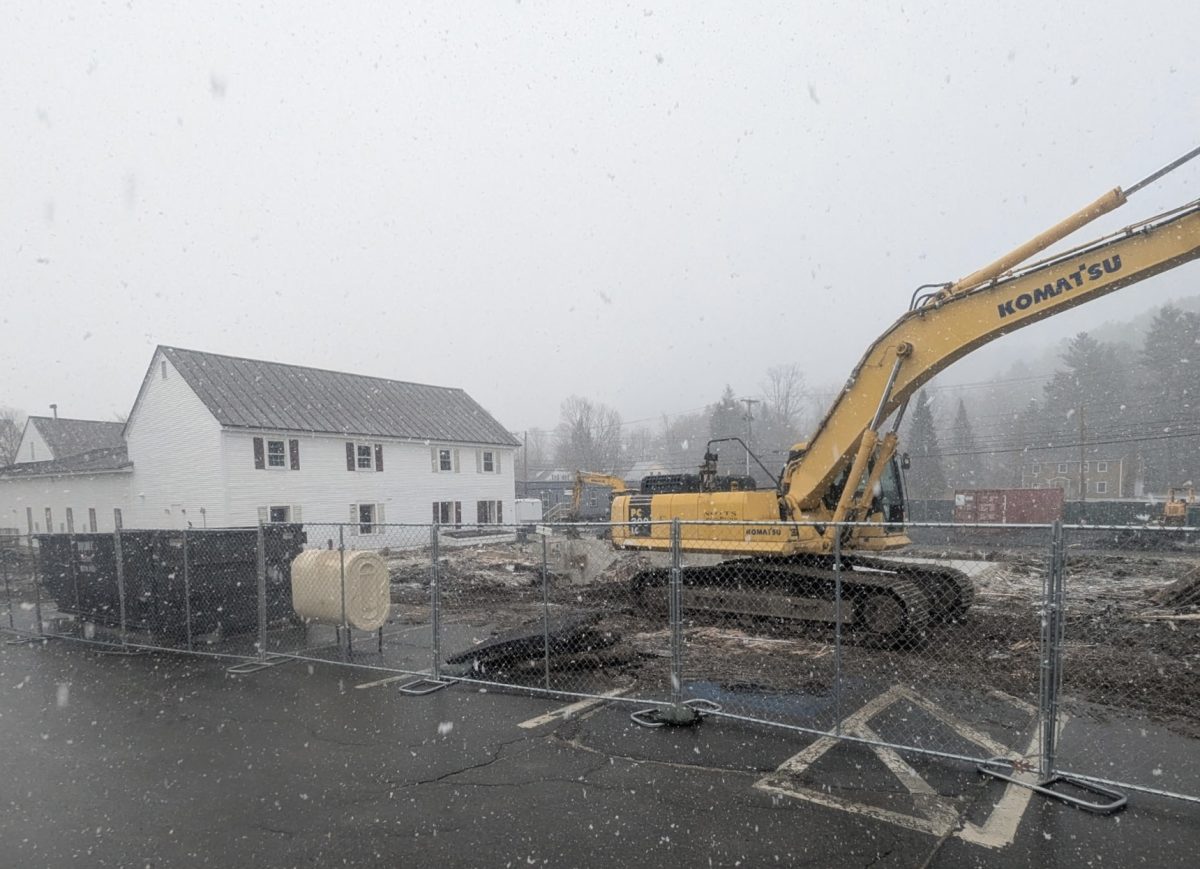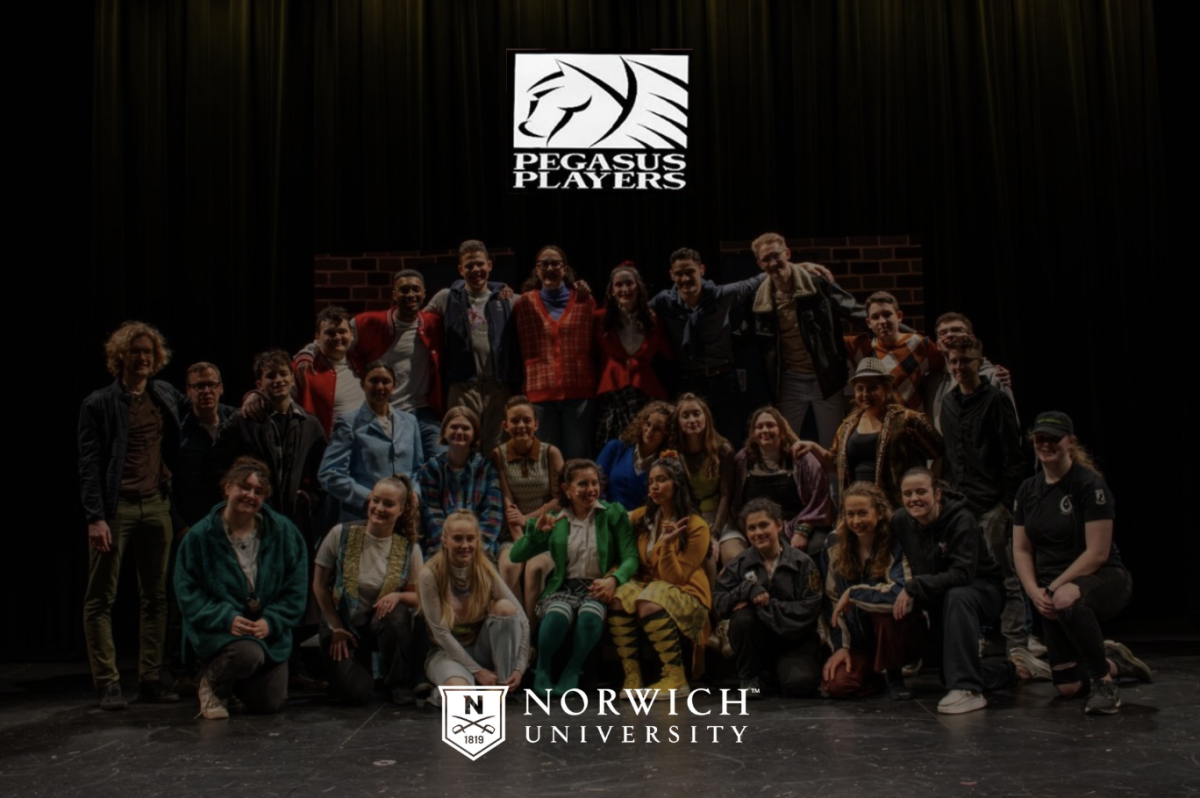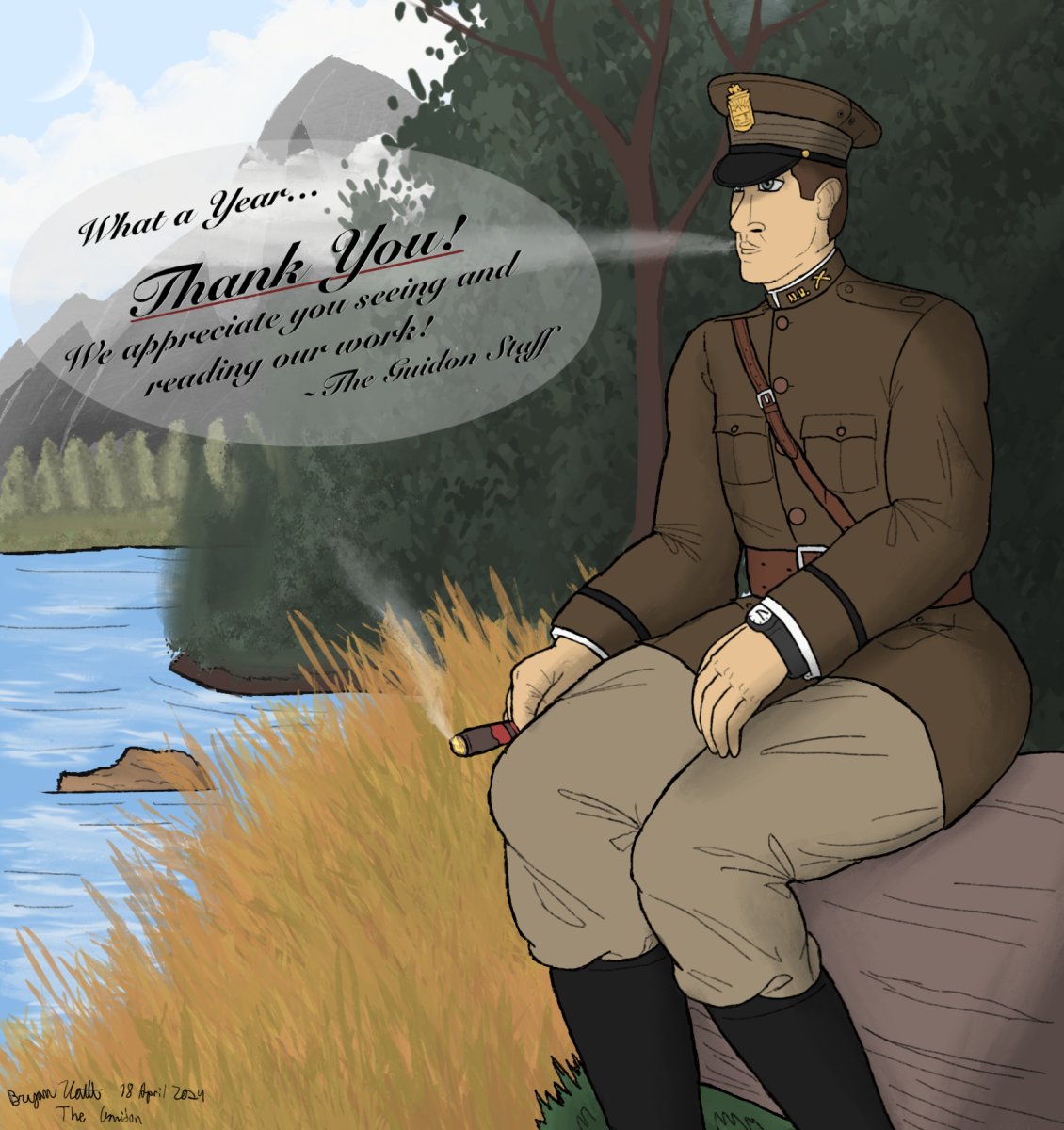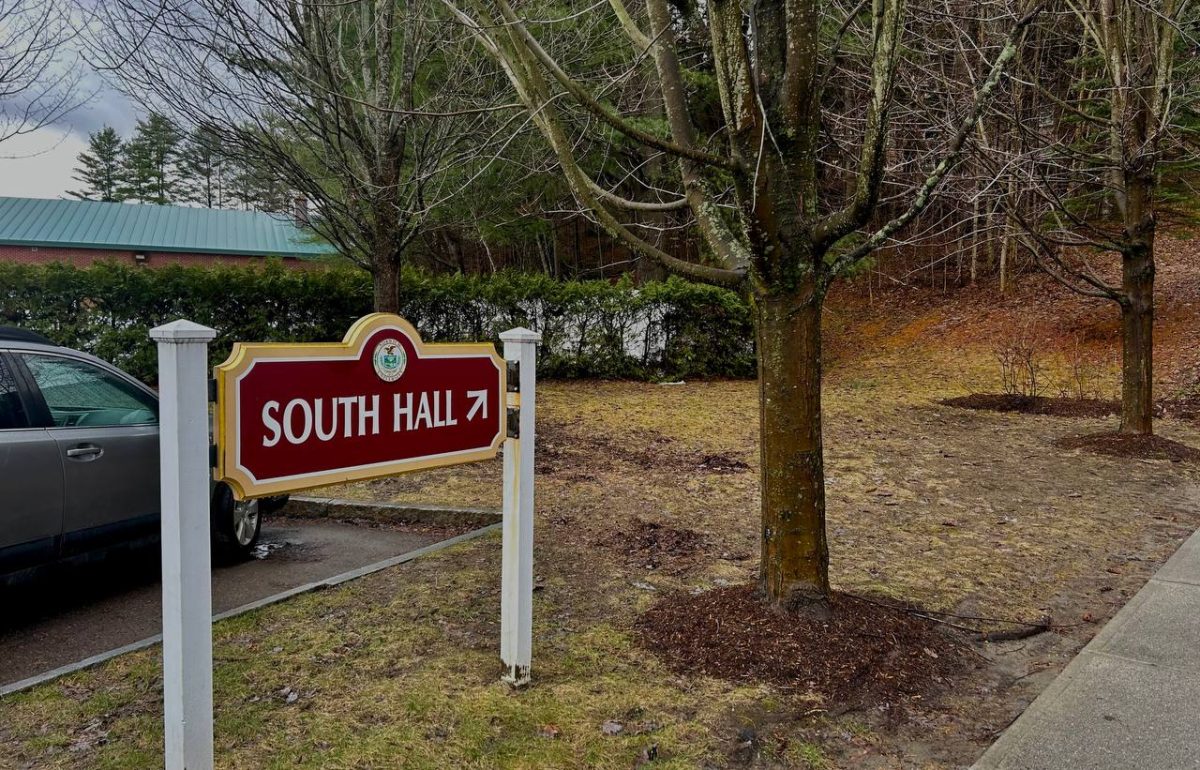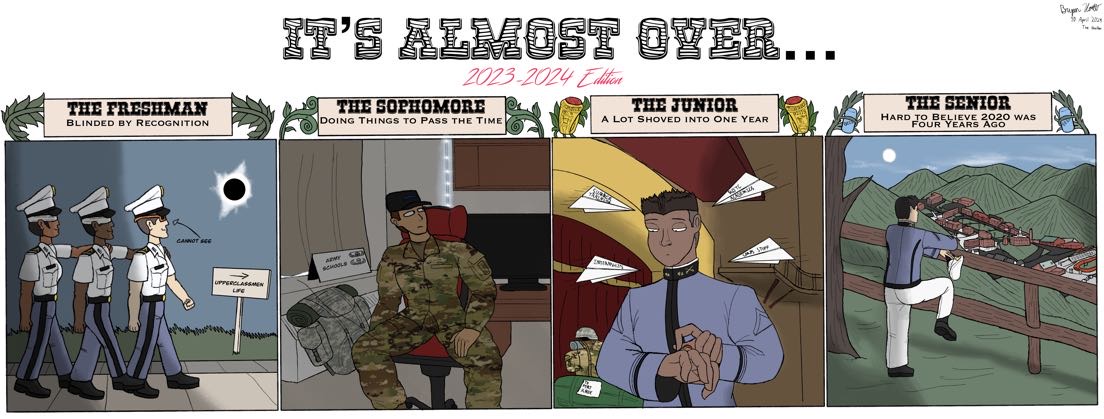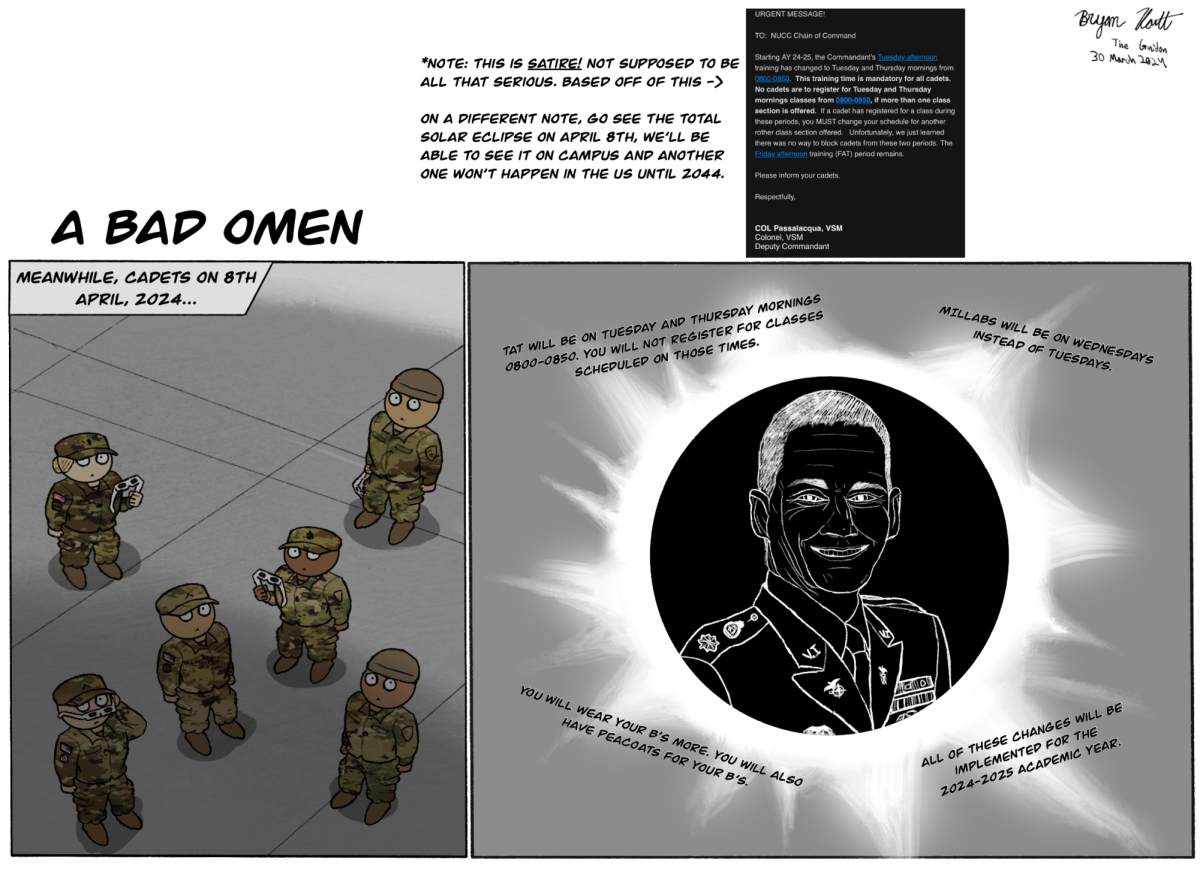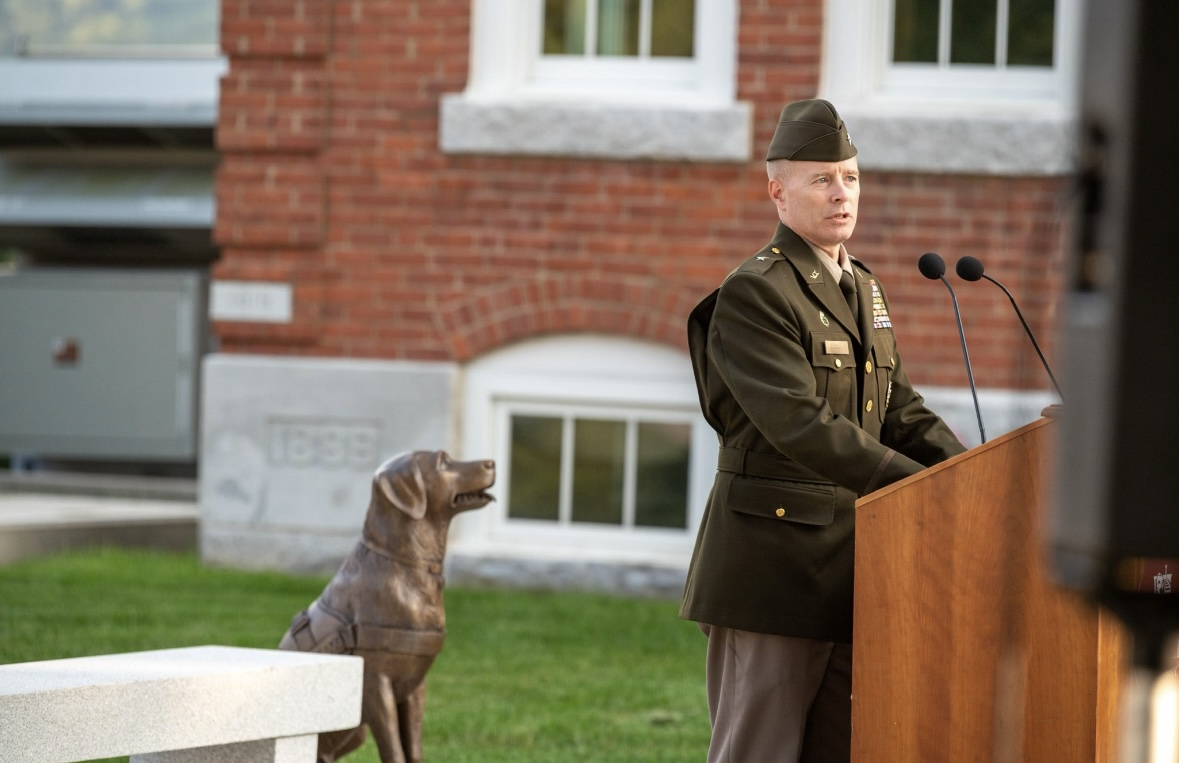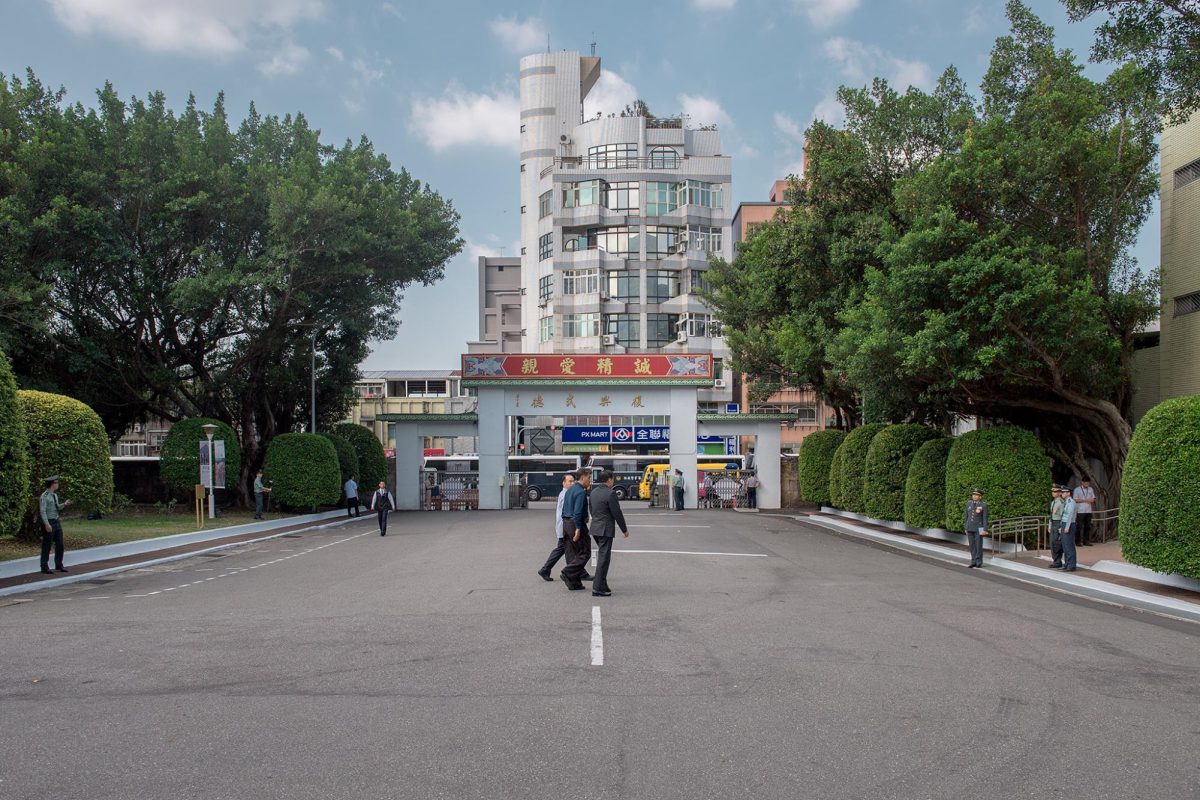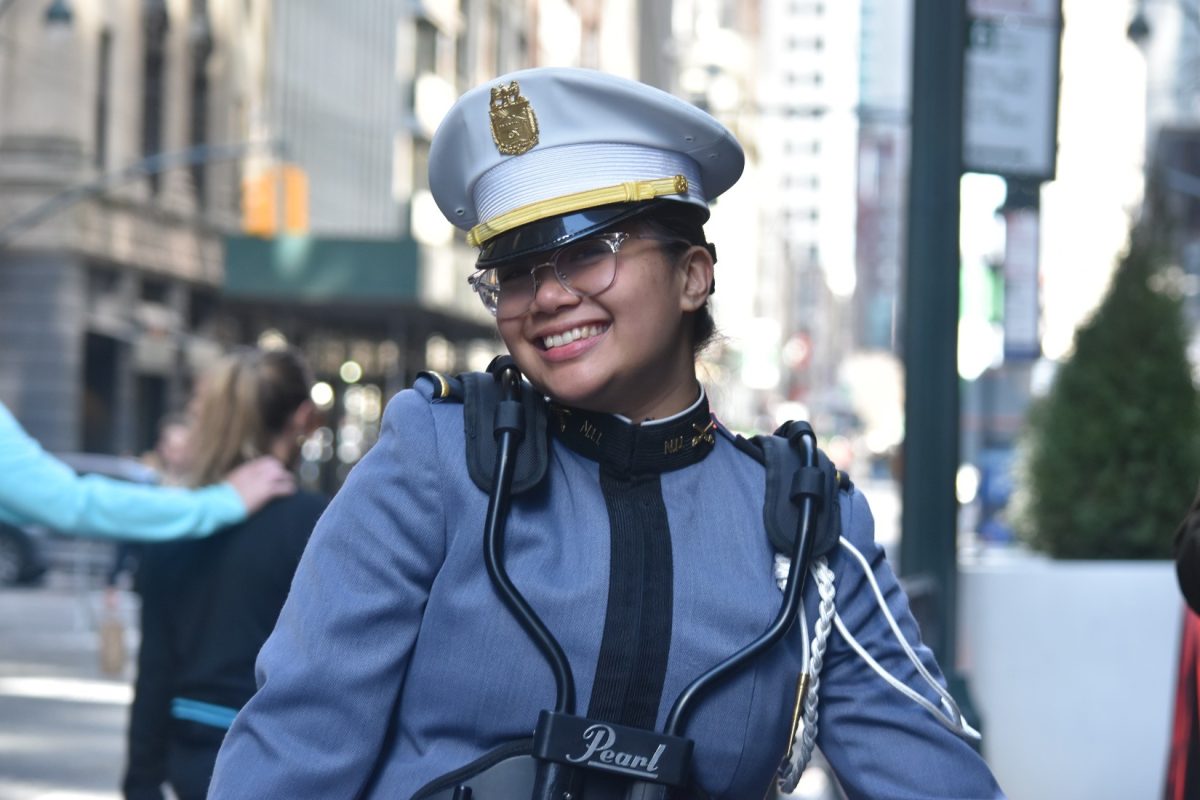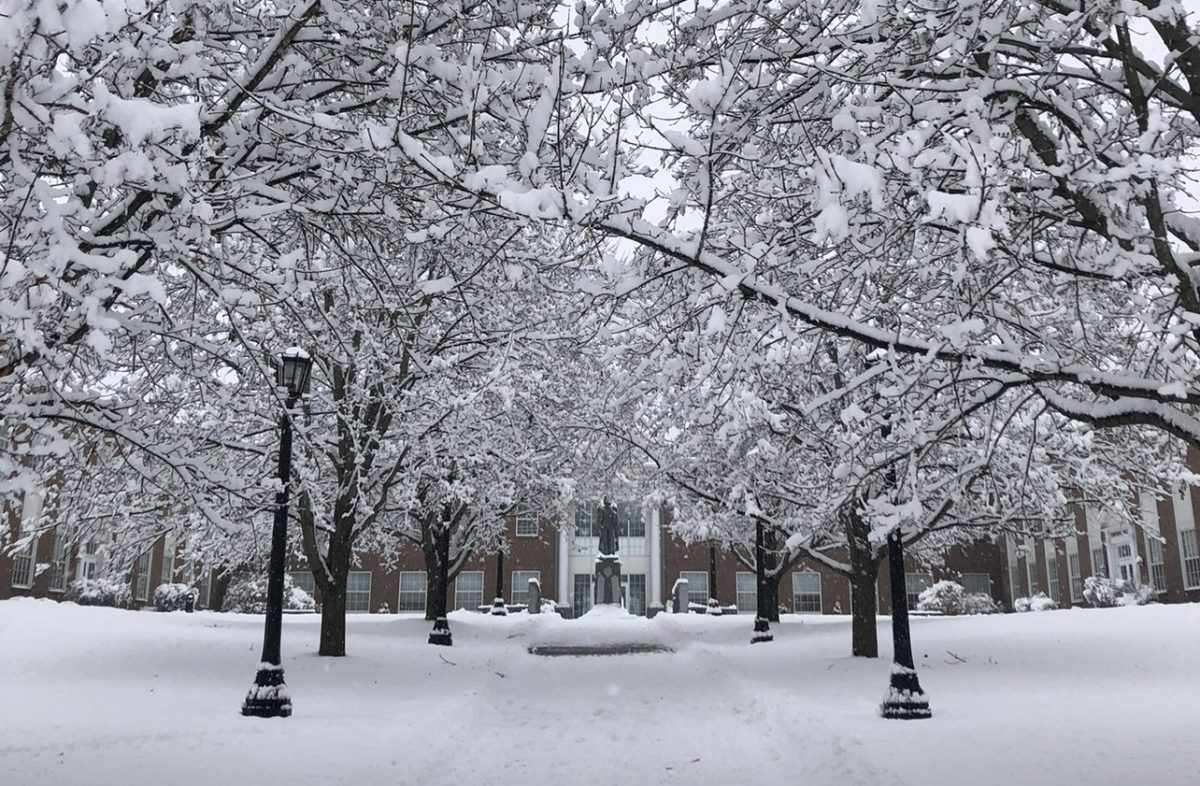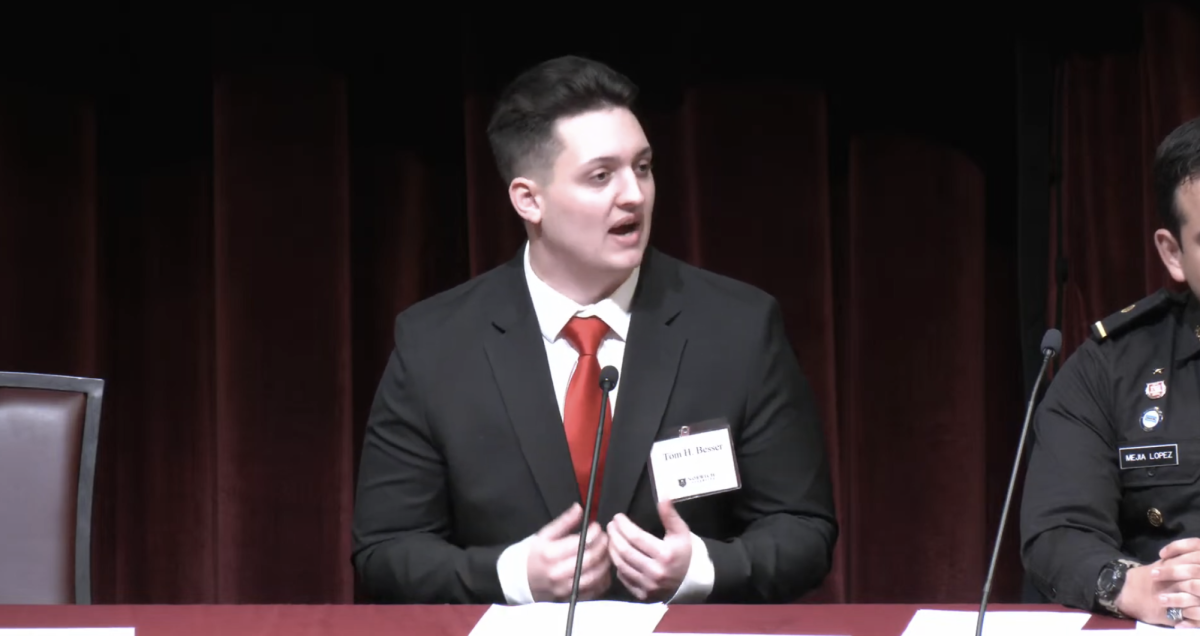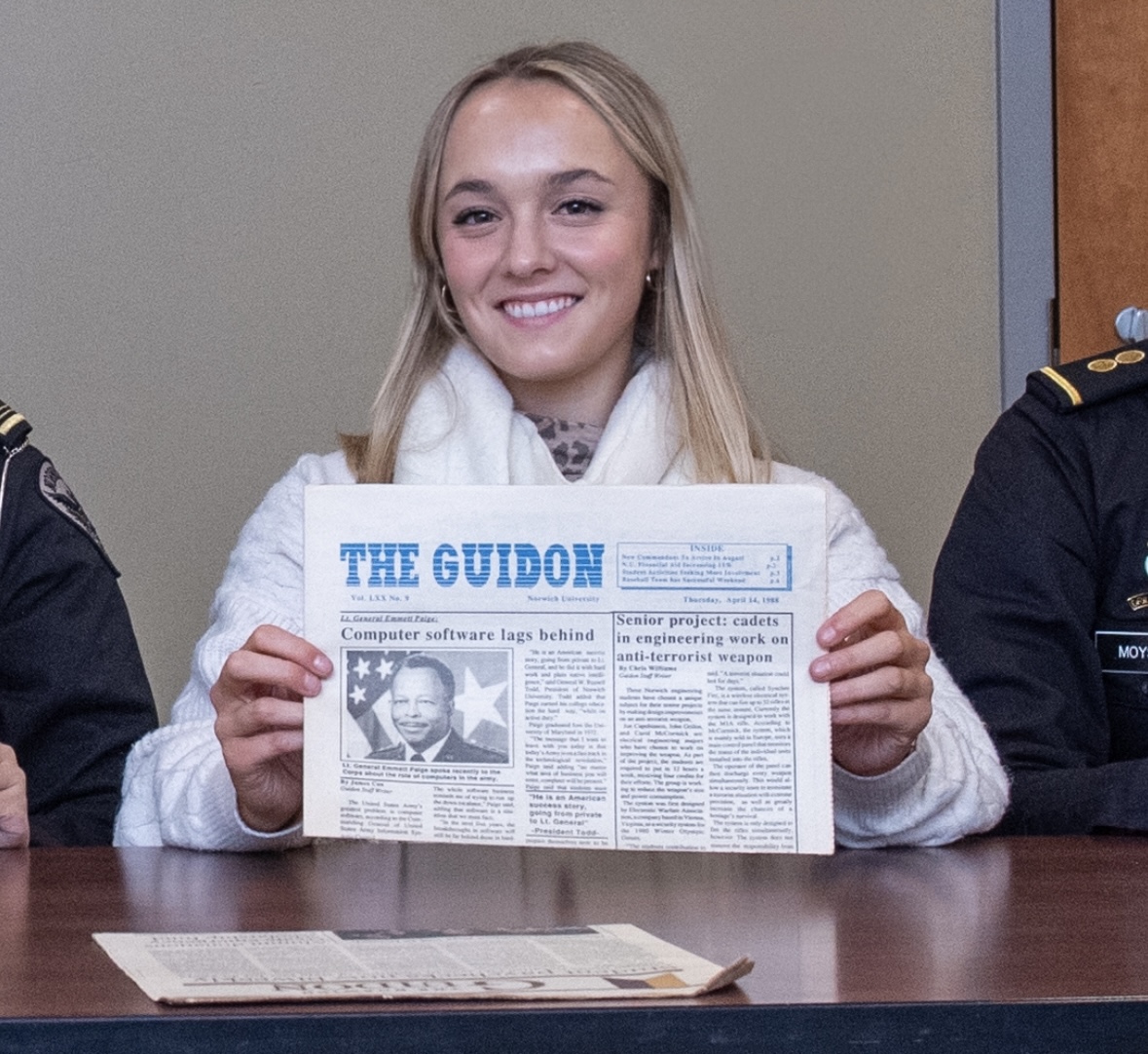On March 26, 2025, Communications Building at Norwich University has been demolished to make space for the new Cyber Fusion Center.
“I have pretty mixed feelings about the Communications Building being torn down,” said Tatum Laliberte, 21, a civilian communications major from Vermont. “For communications students like me, it was more than just a building—it was where we started to find our voice, work on projects, and build a sense of community.”
The Communications Building was home to WNUB Dog River Radio and The Guidon, and played a meaningful role for many students despite its aging infrastructure. Its recent demolition has prompted discussion about the significance of the new Cyber Fusion Center taking its place.
The Cyber Fusion Center originated in 2015 during a high-level meeting in the Trustees’ Room at Jackman Hall, according to Phil Susmann, President of NUARI (Norwich University Applied Research Institutes). At the time, Norwich’s cybersecurity program had only two full-time faculty but was already nationally recognized for its impact.
“Senator Leahy embraced and contributed to the vision for the Cyber Fusion Center of a multi-discipline space for students, faculty, and industry partners to organize ad-hoc to engage emerging issues and problems,” Susmann said.
Leahy’s support, along with federal funding from the Department of Homeland Security and Department of Defense, laid the groundwork for a $16.4 million investment in Norwich’s cyber infrastructure.
Construction is being led by Jones Architecture, with an emphasis on modularity, technology integration, and collaborative design. When completed, the building will feature research labs, meeting spaces, and facilities designed to connect students with industry experts.
“The CFC will provide laboratory and meeting spaces to meet this need,” Susmann said, referring to the center’s role in addressing technologies like AI. The building is intentionally designed to serve all disciplines—not just cybersecurity majors—offering Norwich students hands-on learning across a range of fields.
Dr. Michael Battig, Professor and Director of the Leahy School of Cybersecurity & Advanced Computing, clarified that while the building is physically tied to cyber programs, its scope is outward-facing.
“The new building is primarily an ‘outward facing’ edifice that will be focused on providing students with access to research and development activities with government and industry,” said Dr. Michael Battig, Professor and Director of the Leahy School of Cybersecurity & Advanced Computing.
No offices or labs from the Leahy School will be moved to the building. Instead, the Center is designed as a flexible space that can adapt to evolving educational needs and partnerships.
“I can understand a sentiment of lament upon losing the Communications Building as it feels like losing touch with part of our history in Vermont and at Norwich,” said Professor Christopher Wiersema, a lecturer of communications.
Still, he acknowledged that the move has opened unexpected doors. “Relocating the Media Lab to the Art + Architecture School at Chaplin Hall (even if temporary) has fostered some wonderful collaboration and conversations between myself and the Art + Architecture faculty and students,” Wiersema said.
Wiersema emphasized that this could redefine the role of Communications at Norwich as interdisciplinary and adaptive. “The future of the Communications discipline is interdisciplinary and collaborative.”
Students in cybersecurity see the new building as a welcome investment. “It was a welcome surprise to see this kind of development on campus as someone studying cybersecurity,” said Brett Carlson, 21, junior cybersecurity major, from Massachusetts. “I mainly hope the Fusion Center will be able to provide me with learning and development opportunities outside of the classroom.”
The Guidon story from 2024 already anticipated that the building would eventually be replaced. At the time, the communications building had been described as crumbling with limitations that made expansion difficult. The new structure promises to resolve those issues and bring Norwich’s infrastructure into the 21st century.
Still, the change feels personal for those with memories tied to the old space. “Because it wasn’t the most popular building to have a class in, it sometimes felt like it flew under the radar,” Laliberte said. “But for those of us who spent time there—especially those involved with WNUB Dog River Radio—it absolutely had meaning.”
Laliberte acknowledged the excitement surrounding the new building but questioned what its arrival means for the attention paid to her department.
The university has not announced a specific completion date, but construction is expected to continue into 2025. According to project leaders, the Center will begin to open in phases, prioritizing student access to labs and collaborative research spaces.
Though the Communications Building is gone, its legacy continues through the students and stories it helped shape. “It’s not just about buildings,” Laliberte said. “It’s about where energy and attention are going.”
A groundbreaking ceremony for the Cyber Fusion Research and Development Center will take place at 11:45 a.m. on Friday, April 25, at the building site. The Norwich University community is invited to attend the event, which will feature LtGen John J. Broadmeadow ’83, USMC (Ret), Senator Patrick Leahy, and members of the university’s Board of Trustees.
